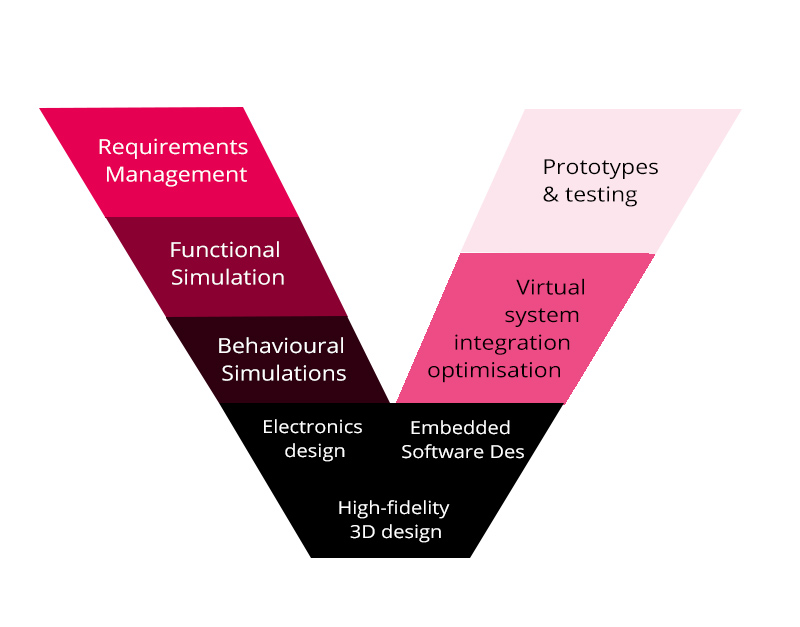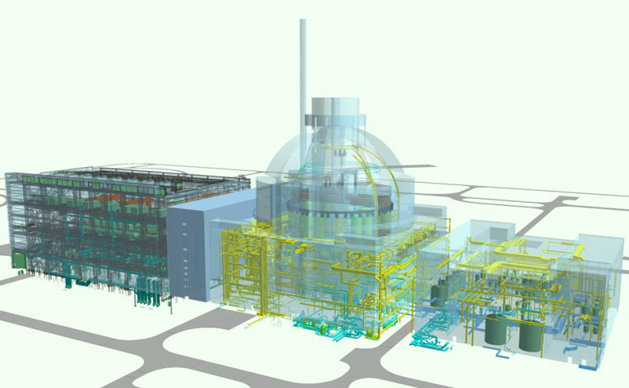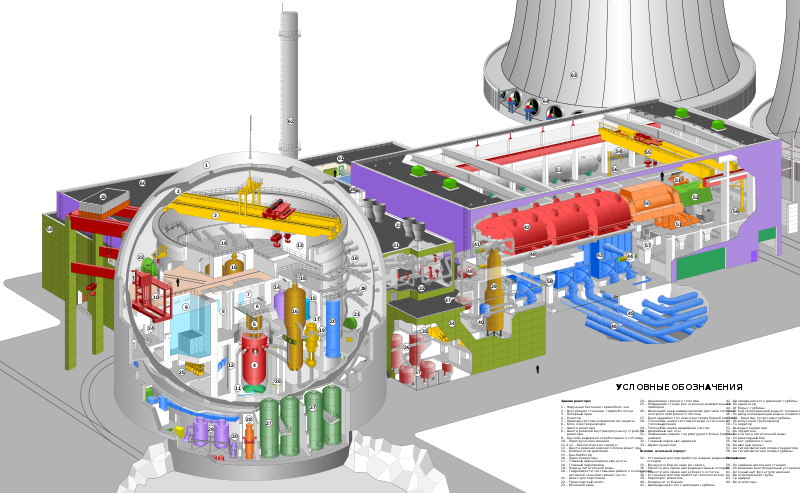
Introducing Model-Based Systems Engineering (MBSE) in the Nuclear Environment
Companies in the nuclear sector are increasingly being challenged to improve many aspects of their operations. Managers and engineers at all levels are being given difficult objectives such as;
- Improve existing power generation technologies,
- Design new systems to improve energy intensity output and reduce energy use of facilities, and
- Develop innovative solutions that can balance demand, cost and environmental priorities in a changing regulatory climate.
A Model-Based Systems Engineering (MBSE) approach to exchanging engineering information can help contribute to all of these goals, developing more seamless operations that lead to better technical performance.
In this article we explain the basic concepts of MBSE, and the benefits that it brings.
We’ll also take a look at how MBSE methodologies are applied by nuclear industry professionals to generate improvements in engineering capacity and efficiency in this sector.
Finally we share some useful tools and training options to help engineers increase their own MBSE knowledge and skills.
Introduction to Model-Based Systems Engineering
The MBSE methodology is an alternative systems engineering approach to more traditional document-based practices.
It is sometimes referred to as Model-Driven Development (MDD), Model-Driven Engineering (MDE) or Model-Based Systems Development (MBSD).
When used effectively MBSE plays a central role in streamlining the System Development Life Cycle (SDLC); the end-to-end process of planning, testing and deploying a new information system.
As part of this, the process adheres to the well-known systems engineering ‘V Model’:

MBSE relies on a set of related system or domain models that are built to more easily exchange information and improve collaboration on system design and analysis procedures.
The models enable common design concepts and standards to be set, explained and updated more simply and clearly between stakeholders, primarily using formal visual modelling principles.
The visual models are clearly defined and are built to a high degree of accuracy, so they can each be used as blueprints for aspects of the overall system, and are often referred to together as the Total System Model (TSM).
The fundamental goal of the MBSE approach is to dramatically reduce the volume and complexity of information that needs to be shared amongst (potentially very large and geographically diverse) teams through the use of such models.
The MBSE Fundamentals
Deploying an MBSE approach requires a collection of related processes, tools and methods that collectively support the systems engineering process. There are a number of core elements that should be understood:
- MBSE begins with the creation or digitisation of all documentation, datasets, diagrams, 3D models and other digital assets required for the project.
- These assets are then transferred into the modelling environment (for example, the Building Information Modelling (BIM) platform for a new construction project) and a comprehensive system architecture model is built to provide a framework for the project by defining system behaviour, structure, requirements and analysis.
- All the project data isn’t necessarily transported to a single location, but instead the MBSE platform and processes enable data from different sources and in multiple formats to be used together in visual models.
- Mechanisms are incorporated to ensure that model development and updates are both requirements-driven in origin and can be traced to specific user and system requirements for ongoing validation.
- Tools and methods that facilitate cross-discipline and cross-vendor interoperability enable a holistic design and development environment that can be used by all project stakeholders. Open architecture standards are often used to facilitate this such as SysML, UML 2, XMI, or AP233.
- Simple and intuitive visualisation and query capabilities that operate across all disciplines for clear information exchange and references are included to assess the designs on an ongoing basis.
- Throughout the process rigorous architecture modelling best practices and principles are relied upon for a high quality result.

Image source (https://en.m.wikipedia.org/wiki/File:VVER-TOI._3D-design_of_Power_Unit.png)
As you can see, heavy emphasis is placed on the use of visual modelling tools and approaches in MBSE, rather than text or datasets. This makes it easier for engineers and other personnel with a wider range of skillsets to collaborate as less specialist knowledge is required in order to understand the system and interact with the designs.
This is one of several strengths that MBSE has over more traditional systems engineering approaches.
We explain this in more detail below.
MBSE vs. Traditional Engineering Approaches
There are a number of reasons why a model-based approach to engineering provides advantages over traditional processes:
- Continuous assessment – testing, verification and validation can be carried out faster and on an ongoing basis during design and development. Much faster than simulations based on separate documentation. This simplifies workflows and leads to more agile and responsive capabilities so engineers can more quickly and easily adapt to changing requirements.
- Customer-driven – the ability to continually assess system properties and rapidly test new specifications helps ensure the development of a system more attuned to end user needs.
- One common design environment – the documents used in more traditional approaches are often segregated and require different software programs, user permissions and skillsets to access and use effectively. MBSE provides one common platform and set of models that all users can access.
- Seamless collaboration – it is difficult to collaborate on an individual file in traditional approaches, leading to versioning issues and unnecessary storage and communication requirements. In MBSE each model acts as the single source of truth for an aspect of a system.
- Reducing misunderstandings – a clearly understood set of common models and standards reduces the possibility for written information to be taken out of context, leading to delays or confusion.
- No single point of failure – there is no single indispensable hub, tool, platform or database that can lead to project delay or failure if it stops functioning.
These strengths have led to widespread adoption of MBSE across several industries and in the next section we look at one of the most challenging; the nuclear sector.
In the Nuclear Environment
The nuclear industry presents engineers and designers with a number of unique challenges in terms of safety, security, political acceptance and the economic and environmental factors that affect energy companies in general.
The industry is also undergoing changes that are requiring facilities to rethink their design and development approaches so as to become more flexible and adaptable.
The costs of incorporating smart grid technologies, next-generation reactors, waste product disposal solutions, innovative sensors and robotic systems, and other new technologies make it impossible to create and test many physical prototypes.
Designers are increasingly turning to digital alternatives.

Image source (https://commons.wikimedia.org/wiki/File:PWR_Nuclear_Power_Plant_-_ru.svg) – found in Google using Advanced Search function ‘free to use, share or modify, even commercially’.
In addition, due to the size and complexity of nuclear facilities software and equipment from a wide range of specialist providers are typically in-use, demanding design solutions that can work seamlessly across many systems in multiple locations.
Energy system engineers have often been early adopters of advanced techniques in model-based engineering due to the challenges they face across engineering disciplines.
MBSE is becoming increasingly popular in the sector as it can address many of these difficulties and has also shown to help reduce costs in other complex sectors such as aerospace and defence.
In particular, MBSE has several distinct benefits in the nuclear environment:
- By acting as the single source of truth for all project information and system architecture the set of models act as a clear reference database. All stakeholders know where and how to access the information relevant to them, and the data can be easily queried and exported for third-party validation and regulatory assessment; a major administrative burden in the nuclear sector.
- Technical testing is significantly safer and easier as the TSM can be processed in order to carry out impact analysis and energy assessments whenever required.
- Although MBSE is growing in penetration in the nuclear industry its more technical aspects are still outside of the core skillset of many engineers. However, as MBSE approaches usually have strong coupling between methods and tools, they are intuitive to develop and deploy.
- In addition, the technology-agnostic nature of the MBSE approach means it can be applied with equal rigour to both physical and software engineering projects.
As you can see, MBSE can add value across the entire nuclear design, build and decommissioning lifecycle. In order to help budding MBSE engineers build their skills and knowledge we have put together a list of useful tools and training options below.
Developing Your Capacity
MBSE is an evolving discipline with new techniques and tools cropping up all the time. In this section we give an overview of some of the software and training options available to help you stay up to date.
Many of these relate to the open source Systems Modeling Language (SysML), which is a dialect of the Unified Modeling Language (UML) and is widely regarded as the de facto standard for MBSE applications.
Tools and software
Selecting the correct tool for an MBSE project is an important but tricky task. To help you make a more informed selection the MBSE Tool Reviews website has put together a useful guide on picking the right option for your project. In addition, here are some of the most popular MBSE tools:
- MagicDraw
- Sparx Enterprise Architect
- Rational Rhapsody
- Papyrus SysML
- Modelio Free
- Visual Paradigm
- UModel
- Astah SysML
Training and Certification
- MBSE + SysML Training & Certification – a variety of training options on the MBSEworks website.
- PivotPoint – MBSE and SysML training and certification.
- NobleProg SysML Training Courses – SysML tool training for Sparx Enterprise Architect and MagicDraw.